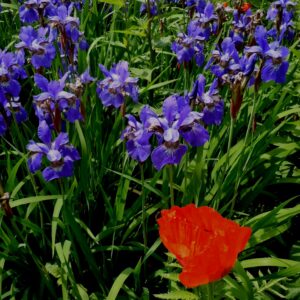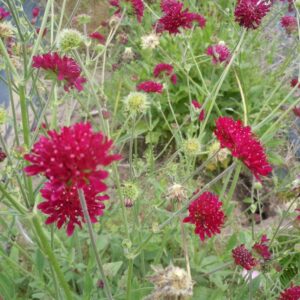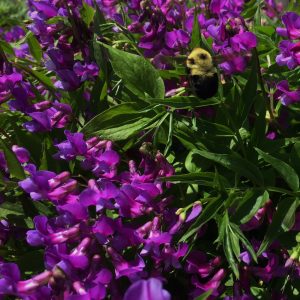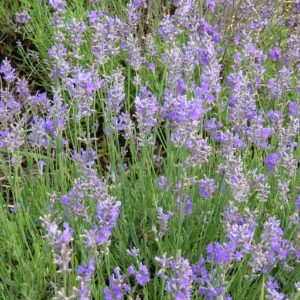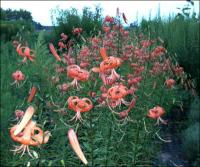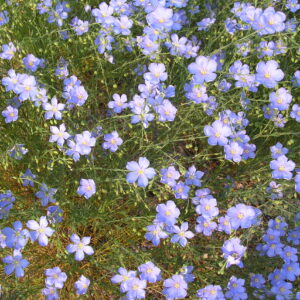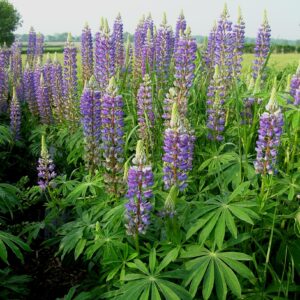Drought, Xeric & Dry Soil Plants
Showing 65–72 of 126 results
-
Iris siberica Siberian Iris Z 4-9
sword shaped leaves with blue, purple or lilac Iris flowers
Narrow, sword shaped leaves with blue, purple, or white Iris flowers in June.
Size: 3-4' x S 12" and spreading
Care: Full sun moist well-drained soil. Deer resistant, Walnut toxicity resistant and drought tolerant.
Native: Eastern Siberia
Awards: England's Royal Horticultural Society Award of Merit.Iris is named after the Greek goddess who accompanied the souls of women to the Elysian Fields by way of the rainbow. Her footprints left flowers the colors of the rainbow. Iris means the “eye of heaven.” The iris is the flower of chivalry, having “a sword for its leaf and a lily for its heart.” Ruskin. Siberian Irises first cultivated in European gardens in the 1500’s. Blue Siberian Iris was introduced to the U.S. in 1796. Cultivated by Washington at Mount Vernon.
-
Knautia macedonica syn. Scabiosa rumelica Pincushion plant Z 5-9
Claret pincushions float at the tips of airy wands all summer & fall
Claret pincushions float at the tips of airy wands all summer & fall
Size: 2- 3’ x 10”
Care: sun in well-drained soil. Keep compact by cutting back to 10” in spring, if you wish
Native: Central Europe
Wildlife Value: attracts butterflies and beesKnautia named for German doctor & botanist Christoph Knaut (1656-1716) who published a method of classifying plants. Collected before 1879
-
Lathyrus vernus Spring vetchling, Spring pea, Spring vetch Z 4-9
Bushy plants bear showy, red-purple pea-like blooms age to rich purple in March-June. Spring gem.
OUT OF STOCK
Bushy plants bear showy, red-purple pea-like blooms age to rich purple in March-June. Spring gem.
Size: 10” x 10”
Care: sun in north to shade in south, moist well-drained soil. Drought tolerant once established
Native: No. Europe - Siberia
Awards: Royal Horticultural Society Award of Garden Merit, Elisabeth Carey Miller Botanical Garden Great Plant PicksIntroduced to gardens before 1629 when herbalist John Parkinson (1567-1650) called it “Blew Everlasting Pease.”
-
Lavandula angustifolia ‘Munstead’ Z 5-9
Very fragrant, compact form of Lavender blooms in wands July-September.
Very fragrant, compact form of Lavender blooms in wands July-September.
Size: 12-18” x 12-18”
Care: Sun, well-drained, soil. Prune to 8” in spring every 2 years to control plant size and promote new growth.
Native: species native to Western Mediterranean
Wildlife Value: Attracts many different bee species and butterflies. Resistant to rabbits and deerThis selection introduced to gardens in 1916. Named for Munstead Woods in England, the home of the extraordinary garden designer Gertrude Jekyll (1843-1932) Lavandula is Latin from lavare meaning “to wash” because it was thrown into baths for the scent, “or because used in lye to give a fragrancy to linen; and because it is very good to wash the face with, and give it both beauty and a grateful scent.”
-
Lilium lancifolium Tiger lily, in Japan called “oniyuri” Z 2-7
Late summer, orange, recurved blossoms with black spots
Late summer, orange, recurved blossoms with black spots
Can not ship to: Delaware and Maryland.
Size: 3-4' x 12"
Care: Sun to part shade in any soil
Native: AsiaLilium was named for the Greek word for smooth, polished referring to its leaves. The Tiger lily was in Chinese literature as long ago as the 10th century. The Chinese grew it in rows as a vegetable and wrote it brought the pained dragon to life. First described for the West by Englebert Kaempfer, physician to Dutch East India Co. on Deschema Island in the 1690’s. William Kerr sent the Tiger lily from Canton China to Kew in England in 1804. First Asian lily imported to America. A Tiger lily grew in Wonderland’s looking glass garden where it told Alice “We can talk…when there is anybody worth talking to.”
-
Limonium latifolium syn. Limonium platyphyllum Sea lavender, Statice latifolia Z 2-8
Airy lavender blue panicles from mid to late summer. Leathery foliage turns reddish in fall. Excellent cut or dried flowers.
OOS
Airy lavender blue panicles from mid to late summer. Leathery foliage turns reddish in fall. Excellent cut or dried flowers.
Size: 24-30” x 24”
Care: Full sun in well-drained soil
Native: Russia, Bulgaria & Romania
Wildlife Value: Deer resistant.Limonium is Greek meaning “meadow” and latifolium means “wide leaf”. This was identified by Dioscorides in De Materica Medica for medicinal use around 70 A.D. Cultivated in gardens since 1700’s. Formerly used to repel moths and cure canker sores.
-
Linum perenne ‘Lewisii’ Perennial flax, Prairie flax Z 4-8
Sky blue flowers closing by afternoon all summer
Sky blue flowers closing by afternoon all summer
Size: 18" x 12"
Care: Full sun in well-drained soil.
Native: Wisconsin west and southLimonium is Greek meaning “meadow” and latifolium means “wide leaf”. This was identified by Dioscorides in De Materica Medica for medicinal use around 70 A.D. Cultivated in gardens since 1700’s. Formerly used to repel moths and cure canker sores.
-
Lupinus perennis Sun-dial lupin, Old maid’s bonnet, wild pea Z. 4-9
Many flowered blue, pea flowered raceme May-June
Many flowered blue, pea flowered raceme May-June
Size: 1-2' x 12"
Care: full sun in well drained soil. A legume, so it enriches the soil by adding nitrogen.
Native: Maine to FL, Ontario to MN to Louisiana, Wisconsin native.
Wildlife Value: Attracts both hummingbirds and butterflies. The only food for larvae of endangered species, Karner Blue butterfly.Lupinus is Latin from Lupus meaning “wolf.” Likely sent from its native Virginia to England by Tradescant the Younger in 1637. Certainly collected by Frenchman Michaux, who scoured eastern North American over 11 years in late 1700’s. Grown by Jefferson. Grown at America’s 1st botanic garden, Elgin Botanic Garden 1811.The Cherokee used this to stop bleeding. The Menominee fattened their horses with this Lupin and made them spirited. They rubbed the plant on themselves to give power to control the horses.

